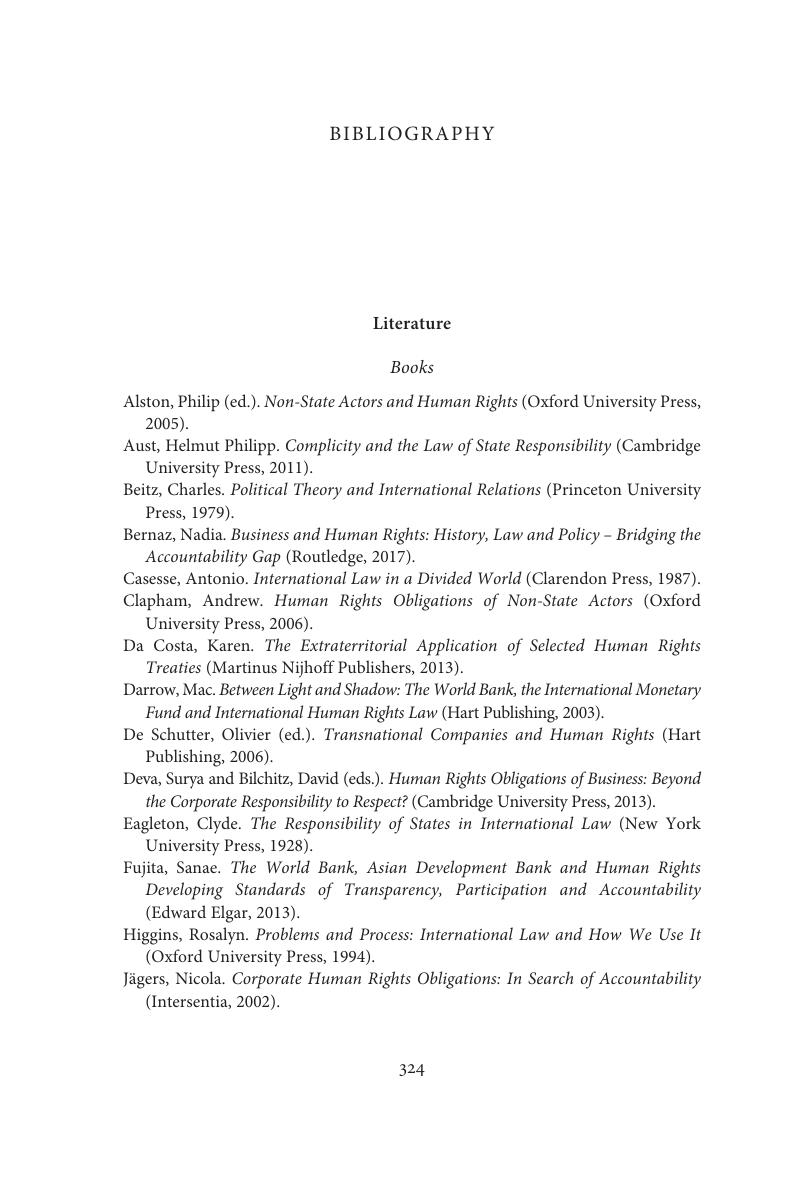Book contents
- Children’s Rights and Business
- Children’s Rights and Business
- Copyright page
- Dedication
- Contents
- Acknowledgments
- Abbreviations
- Part I Children’s Rights, Businesses and Duties
- Part II Case Illustrations: A Brief Introduction
- Part III Polycentricity, Children’s Rights and Business
- Bibliography
- Index
- References
Bibliography
Published online by Cambridge University Press: 23 January 2020
- Children’s Rights and Business
- Children’s Rights and Business
- Copyright page
- Dedication
- Contents
- Acknowledgments
- Abbreviations
- Part I Children’s Rights, Businesses and Duties
- Part II Case Illustrations: A Brief Introduction
- Part III Polycentricity, Children’s Rights and Business
- Bibliography
- Index
- References
Summary

- Type
- Chapter
- Information
- Children's Rights and BusinessGoverning Obligations and Responsibility, pp. 324 - 364Publisher: Cambridge University PressPrint publication year: 2020



